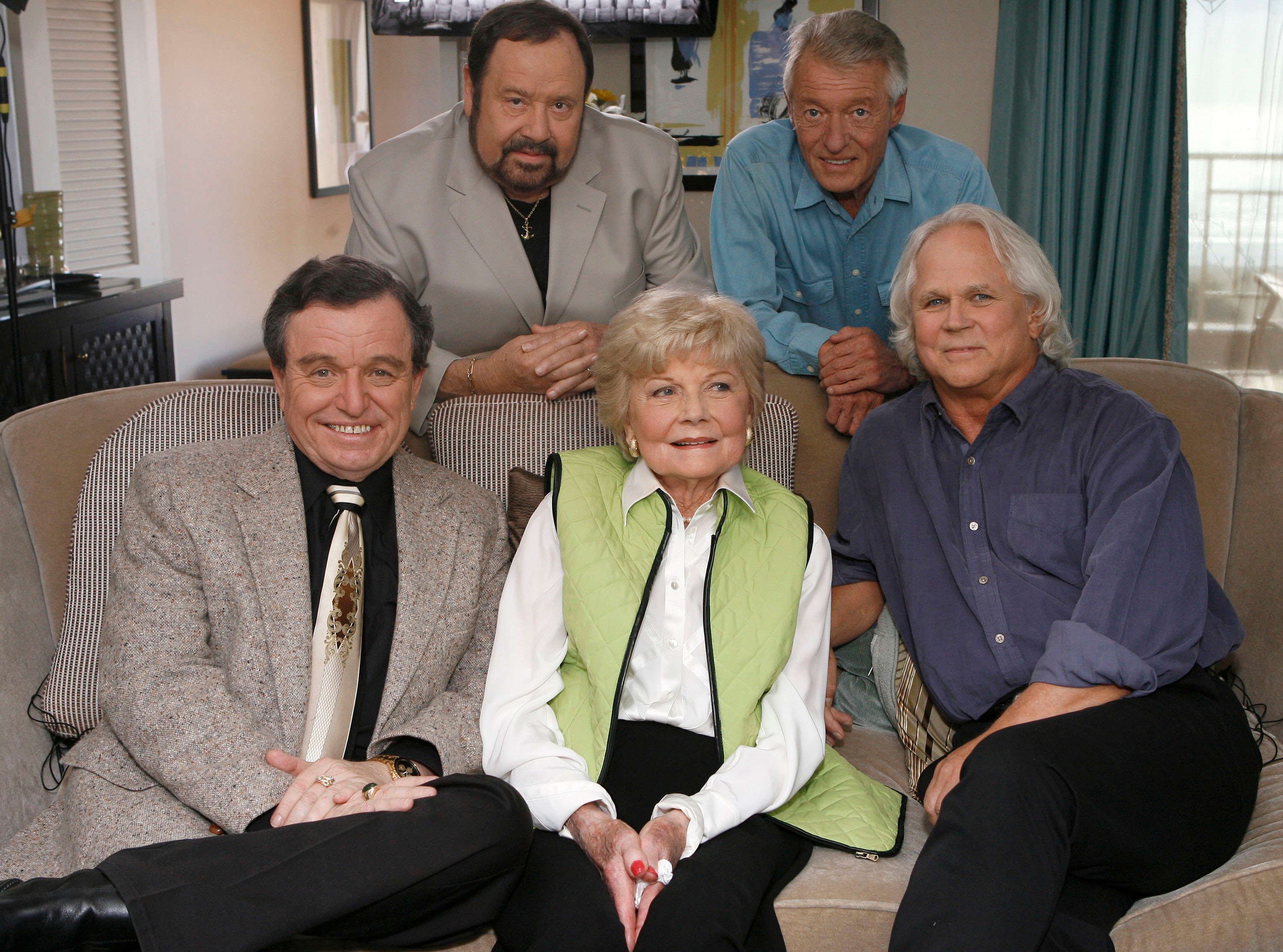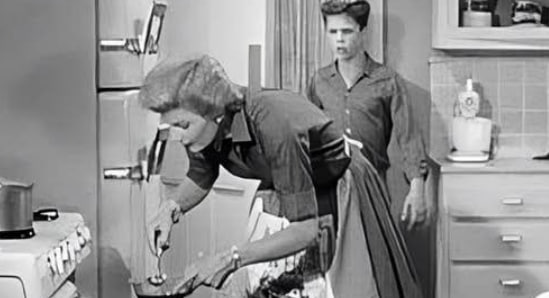Leave It to Beaver is widely regarded as one of the most iconic American television sitcoms of the 20th century. Originally airing from 1957 to 1963 on CBS and then ABC, the show offered a heartfelt, humorous, and remarkably relatable portrayal of mid-century suburban family life in the United States. Even decades after its original broadcast, Leave It to Beaver continues to resonate with audiences, thanks to its universal themes of family, growing up, and moral guidance.
According to The Museum of Broadcast Communications, Leave It to Beaver became a cultural touchstone, shaping the family sitcom genre for generations to come (source: Museum.tv).

The Setting: Mayfield’s Suburban Charm
Set in the fictional town of Mayfield, the series focuses on the Cleaver family. The show paints a portrait of American suburbia during the postwar boom, marked by tidy homes, tree-lined streets, and close-knit communities. The Cleaver household embodies the idealized vision of the nuclear family so often celebrated in 1950s and 1960s popular culture.
The show’s attention to everyday life—school troubles, peer pressure, neighborhood antics—helped it stand apart from more fantastical or slapstick-driven comedies of the time. Instead, it offered gentle humor rooted in real-life experiences, making it easy for viewers to see themselves in the Cleavers’ world.
Memorable Characters and Cast
At the heart of Leave It to Beaver is the Cleaver family:
-
Theodore “Beaver” Cleaver (Jerry Mathers): The show’s main character, Beaver is an inquisitive, often mischievous young boy whose adventures and misadventures drive much of the plot. Jerry Mathers’s natural, unaffected performance won praise for its authenticity.
-
Wally Cleaver (Tony Dow): Beaver’s older brother, Wally is a quintessential all-American teen—athletic, polite, and level-headed. Wally often offers Beaver guidance, demonstrating a realistic sibling bond that was central to the show’s charm.
-
Ward Cleaver (Hugh Beaumont): The father figure, Ward is patient, understanding, and morally steadfast. He often provides the show’s moral lessons through calm, reasoned discussions with his sons.
-
June Cleaver (Barbara Billingsley): The quintessential 1950s mother, June is caring, gentle, and consistently elegant. She’s seen as the emotional anchor of the family, balancing warmth with firm moral guidance.
According to the Television Academy, these portrayals helped establish enduring archetypes for American family sitcoms (source: Emmys.com).
Storytelling Approach: Everyday Adventures with Heart
Unlike many contemporary comedies that relied on outlandish scenarios, Leave It to Beaver gained acclaim for focusing on the relatable experiences of childhood and adolescence. Episodes often featured Beaver learning important life lessons after making mistakes—whether it was lying to avoid punishment, struggling with schoolwork, or trying to fit in with peers.
This storytelling style was both entertaining and instructive, reflecting the show’s subtle but clear moral framework. Parents Ward and June rarely scolded harshly, instead guiding their sons with reason and compassion. This approach set a standard for TV families who would follow, demonstrating that sitcoms could deliver humor and values without preaching.
Realism and Relatability
Critics have long credited Leave It to Beaver with capturing the nuances of family life in a way that felt honest. According to cultural historian Gary Edgerton, the show was “remarkably well-written for its time,” with naturalistic dialogue and believable family dynamics (source: The Columbia History of American Television, Columbia University Press).
Beaver’s curiosity, misunderstandings, and occasional troublemaking mirrored the real behaviors of children, while the Cleaver parents modeled thoughtful parenting. This authenticity helped cement the show’s place in American hearts.
:max_bytes(150000):strip_icc():focal(749x0:751x2)/leave-it-to-beaver-cast-060425-df2aaffff9054744aa9041c51f4207e8.jpg)
Influence on Television History
Leave It to Beaver wasn’t the first family sitcom, but it helped shape the genre. It demonstrated that television could tell small-scale, personal stories with broad appeal. Its influence is evident in later family comedies like The Brady Bunch, Family Ties, The Wonder Years, and Modern Family, all of which explore the humor and challenges of family life.
In 1997, TV Guide included Leave It to Beaver in its list of “100 Greatest Episodes of All Time,” recognizing its lasting impact (source: TV Guide).
Lasting Legacy: Beyond the Original Series
The popularity of Leave It to Beaver didn’t end with its original run:
-
Syndication: The series has aired in reruns for decades, introducing new generations to the Cleavers. Its continuing presence on classic TV channels underscores its staying power.
-
Reunion Movie: In 1983, the original cast reunited for Still the Beaver, a TV movie that depicted Beaver as a divorced father returning to his childhood home. The success of the film led to a follow-up series.
-
Sequel Series: The New Leave It to Beaver (1984–1989) continued the story with adult Beaver and Wally raising their own children. This series offered a more modern perspective while maintaining the original’s focus on family values.
Universal Themes: Family, Responsibility, and Understanding
Perhaps the most important reason Leave It to Beaver endures is its exploration of timeless, universal themes. Issues like honesty, respect, empathy, and personal responsibility remain just as relevant today as they were in the 1950s.
The show never shied away from acknowledging that children make mistakes. Instead, it emphasized the importance of learning from those mistakes with the help of supportive, understanding parents and siblings. This commitment to portraying growth and forgiveness remains one of its most celebrated qualities.
Cultural Significance and Academic Study
Scholars have also examined Leave It to Beaver as a cultural document. It offers insight into American ideals of the mid-20th century, including the rise of suburban living and evolving parenting philosophies. The show has been referenced in academic analyses of television history and American culture, helping students understand postwar values and the development of family-centered media.
For example, Lynn Spigel’s Make Room for TV: Television and the Family Ideal in Postwar America (University of Chicago Press) discusses how shows like Leave It to Beaver helped shape public perceptions of family life.

Conclusion: A Comforting Reminder of Enduring Values
More than 60 years after its debut, Leave It to Beaver remains a beloved classic, admired for its humor, warmth, and humanity. By focusing on everyday problems, strong family bonds, and moral lessons delivered with kindness, the series continues to offer viewers a comforting vision of family life rooted in love, respect, and understanding.
Its legacy endures not just as entertainment but as a meaningful cultural artifact—one that reminds us of the importance of patience, empathy, and the enduring power of family.
References and Further Reading
-
The Museum of Broadcast Communications. Leave It to Beaver
-
Emmys.com. Leave It to Beaver Turns 60
-
TV Guide. 100 Greatest Episodes of All Time
-
Edgerton, Gary. The Columbia History of American Television. Columbia University Press.
-
Spigel, Lynn. Make Room for TV: Television and the Family Ideal in Postwar America. University of Chicago Press.

